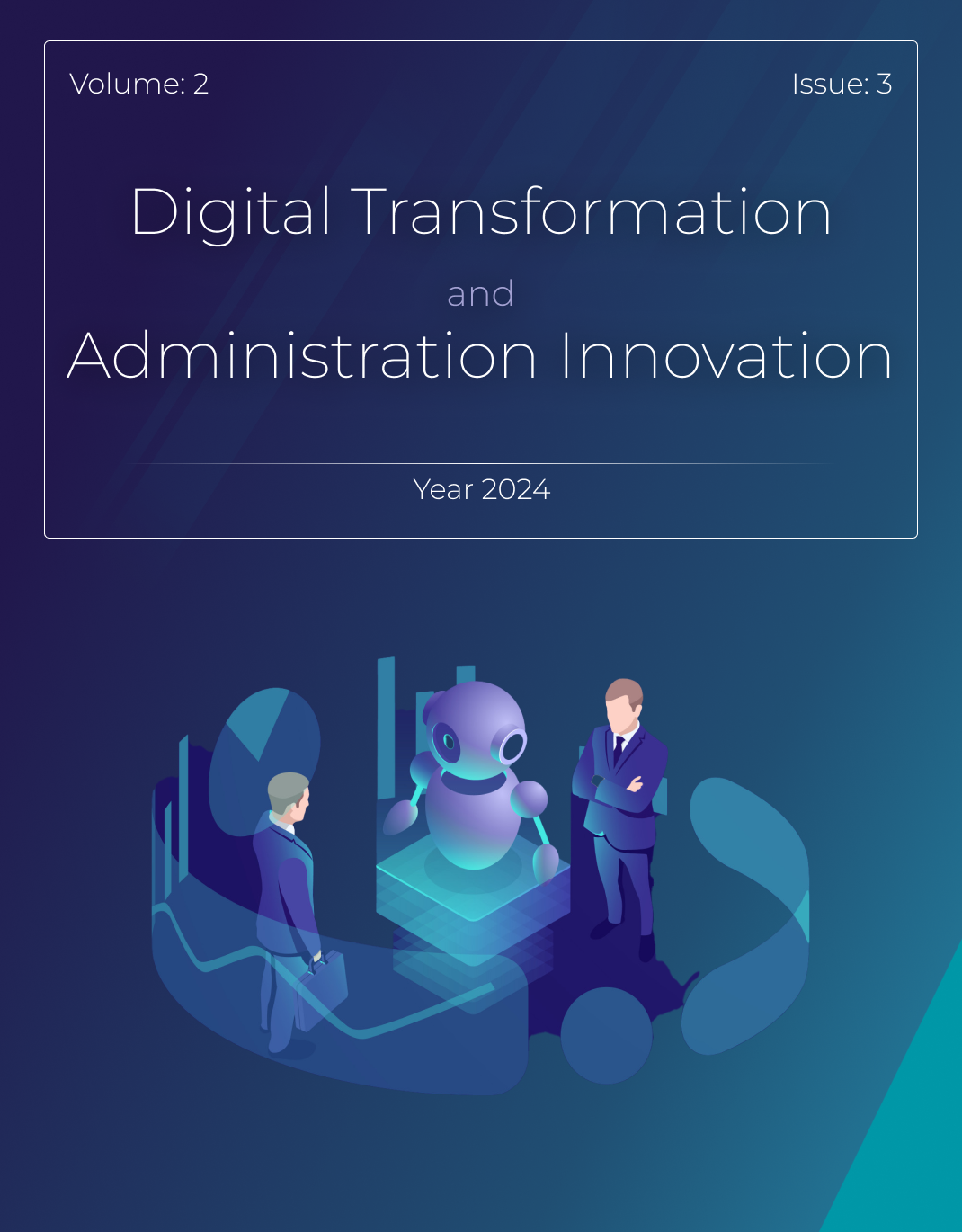Explaining the Factors Influencing Value Creation in Digital Banking (Case Study: Refah Bank)
Keywords:
Digital banking, value creation, banking servicesAbstract
The present study aims to propose a value creation model in digital banking. This study employs a mixed-methods approach (qualitative and quantitative). The qualitative phase's statistical population consisted of 15 university professors, managers, and experts in digital banking, who were selected using purposive sampling. In the quantitative phase, the statistical population included managers and experts of Refah Bank in Tehran. The sample size for the quantitative phase was determined as 235 individuals using Cochran's formula. Data collection in the qualitative phase was conducted through semi-structured interviews based on theoretical foundations, and the reliability of this phase was confirmed using Cohen's kappa coefficient. In the quantitative phase, a questionnaire and simple random sampling method were used to collect data. The reliability of the questionnaire was assessed using Cronbach’s alpha. The qualitative data were analyzed using thematic analysis, while in the quantitative phase, descriptive statistics, exploratory factor analysis, and confirmatory factor analysis were applied. The results of thematic analysis identified 292 codes, 64 themes categorized into 18 basic themes, and 4 organizing themes. The findings indicated that the factors influencing value creation in digital banking include customer digital experience management, which encompasses user-friendly design, ease of use, creation of a unique experience, monitoring customer digital experience, and applying technology in experience management. Digital co-creation consists of direct digital feedback, indirect digital feedback, customer digital participation, and digital interaction with customers. Digital service management includes digital service customization, management of digital concerns, service delivery management, service quality improvement, digital service diversity, customer support and training, and a digital value-creating mindset. Digital value management involves monetary value, non-monetary value, informational value, relational value, and hedonic value. The results of confirmatory factor analysis further validated the model derived from the literature review.
Downloads
References
Abedi, F., Vakili-Fard, H., Kordlouei, H., & Khalili-Iraqi, M. (2024). Presenting a New Value Creation Model in Banking. Investment Knowledge Journal(No Issue Number). http://www.jik-ifea.ir/article_23927.html?lang=en
Ahmad, N. R. (2025). Financial Inclusion: How Digital Banking is bridging the Gap for Emerging Markets. Journal of Applied Linguistics and TESOL (JALT), 8(1), 894-902. https://jalt.com.pk/index.php/jalt/article/view/400
Alghizzawi, M., Ahmed, E., Albanna, H., Alkhlaifat, B. I., & Jadu, K. (2024). The Relationship Between Business Intelligence and Digital Banking Services in Jordanian Islamic Banks. Cham: Springer Nature Switzerland. https://doi.org/10.1007/978-3-031-48770-5_5
Elia, G., Polimeno, G., Solazzo, G., & Passiante, G. (2020). A multi-dimension framework for value creation through big data. Industrial Marketing Management, 90, 617-632. https://doi.org/10.1016/j.indmarman.2020.03.015
Farahmand, A.-A., Fallah Shams, M., & Zamordian, G. (2022). Identifying the Factors Influencing Value Creation for Corporate Banking Customers. Modern Marketing Research, 12(2), 1-20. https://nmrj.ui.ac.ir/article_26781.html?lang=en
Ferm, L. E. C., & Thaichon, P. (2021). Value co-creation and social media: Investigating antecedents and influencing factors in the US retail banking industry. Journal of Retailing and Consumer Services, 61, 102548. https://doi.org/10.1016/j.jretconser.2021.102548
Jain, S., Sharma, K., & Devi, S. (2024). The dynamics of value co-creation behavior: A systematic review and future research agenda. International Journal of Consumer Studies, 48(1), e12993. https://doi.org/10.1111/ijcs.12993
Karjaluoto, H., Glavee-Geo, R., Ramdhony, D., Shaikh, A. A., & Hurpaul, A. (2021). Consumption values and mobile banking services: understanding the urban-rural dichotomy in a developing economy. International Journal of Bank Marketing, 39(2), 272-293. https://doi.org/10.1108/IJBM-03-2020-0129
Lähteenmäki, I., Nätti, S., & Saraniemi, S. (2022). Digitalization-enabled evolution of customer value creation: An executive view in financial services. Journal of Business Research, 146, 504-517. https://doi.org/10.1016/j.jbusres.2022.04.002
Miri Rostami, S. A., Nasiri Abukheili, S., & Kazemi, R. (2024). Examining the Impact of Communication, Contact, Entertainment, and Perceived Gamification on the Perceived Value of Mobile Banking and the Willingness to Continue Using It (Case Study: Sepah Bank Branches in Mazandaran Province). Quarterly Journal of Management, Accounting, and Economics, 8(1), 12-29. https://en.civilica.com/doc/1989931/
Mourtzis, D., Panopoulos, N., Angelopoulos, J., Wang, B., & Wang, L. (2022). Human-centric platforms for personalized value creation in metaverse. Journal of Manufacturing Systems, 65, 653-659. https://doi.org/10.1016/j.jmsy.2022.11.004
Mousavi, S. N.-o.-D., Nazarpoori, A., Saeedi, A., & Shariat-Zad, A. (2015). Examining the Impact of Customer Value Co-Creation Behavior on Providing Innovative Services in Organizations: Explaining the Role of Citizenship and Participatory Behavior. Scientific-Research Biannual Journal of Business Strategies, 12(5), 15-28. https://cs.shahed.ac.ir/article_2281.html
Nagy, A. (2013). Approaching Service Innovation Patterns. European Journal of Interdisciplinary Studies, 5(1), 39. https://ejist.ro/files/pdf/370.pdf
Pio, P. G., Sigahi, T., Rampasso, I. S., Satolo, E. G., Serafim, M. P., Quelhas, O. L., Leal Filho, W., & Anholon, R. (2024). Complaint management: comparison between traditional and digital banks and the benefits of using management systems for improvement. International Journal of Productivity and Performance Management, 73(4), 1050-1070. https://doi.org/10.1108/IJPPM-08-2022-0430
Raza, S. A., Umer, A., Qureshi, M. A., & Dahri, A. S. (2020). Internet banking service quality, e-customer satisfaction and loyalty: the modified e-SERVQUAL model. The TQM Journal, 32(6), 1443-1466. https://doi.org/10.1108/TQM-02-2020-0019
Safaei, S. (2021). The Impact of Online Ease of Use on the Intention to Adopt Mobile Banking, Considering the Mediating Role of Perceived Hedonic and Utilitarian Values and the Moderating Role of Perceived Security Concerns (Case Study: Bank Saderat in North Khorasan Province). Quarterly Journal of Progress and Excellence Research, 4(1). https://www.jpishraft.com/article_135346.html
Sankaran, R., & Chakraborty, S. (2021). Factors impacting mobile banking in India: Empirical approach extending UTAUT2 with perceived value and trust. IIM Kozhikode Society & Management Review, 11(1), 7-24. https://doi.org/10.1177/2277975220975219
Seidin, B., Bodaqi Khajeh-Nowbar, H., Ramazani, M., & Alavi Matin, Y. (2022). Presenting a Brand Equity Model for Refah Bank and the Role of Digital Literacy in the Development of Electronic Services. Iranian Political Sociology Quarterly, 5(8). https://en.civilica.com/doc/1522154/
Shuhaiber, A., Al-Omoush, K. S., & Alsmadi, A. A. (2025). Investigating trust and perceived value in cryptocurrencies: do optimism, FinTech literacy and perceived financial and security risks matter? Kybernetes, 54(1), 330-357. https://doi.org/10.1108/K-03-2023-0435
Sutarso, Y., Setiawan, D. B., & Suminar, B. (2023). The Role of Independent Value Creation, Value, and Trust on Banking Marketing Performance: Moderating Role of Gender. Journal Management Business, 14(1), 90-110. https://doi.org/10.18196/mb.v14i1.15940
Wewege, L., Lee, J., & Thomsett, M. C. (2020). Disruptions and digital banking trends. Journal of Applied Finance and Banking, 10(6), 15-56. https://www.researchgate.net/publication/343050625_Disruptions_and_Digital_Banking_Trends
Widayanti, A., & Alam, I. A. (2024). The Influence of E-Banking and Service Quality on Loyalty in Customers of Bank BRI Unit Bukit Kemuning Lampung Utara. Formosa Journal of Multidisciplinary Research, 3(2), 305-316. https://doi.org/10.55927/fjmr.v3i2.8262
Downloads
Published
Submitted
Revised
Accepted
Issue
Section
License
Copyright (c) 2024 Digital Transformation and Administration Innovation

This work is licensed under a Creative Commons Attribution-NonCommercial 4.0 International License.







